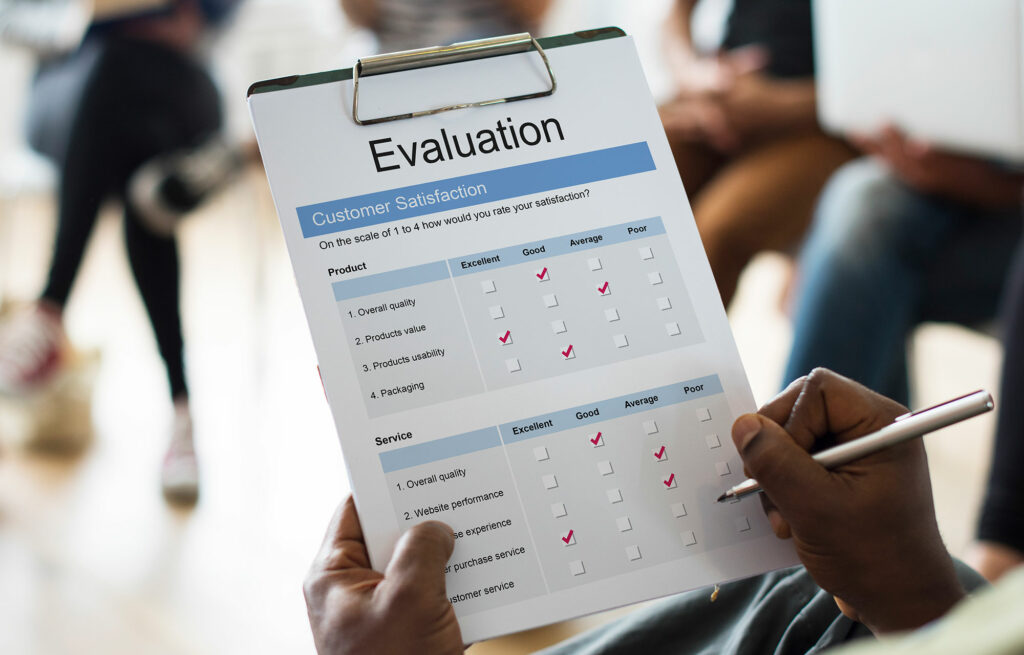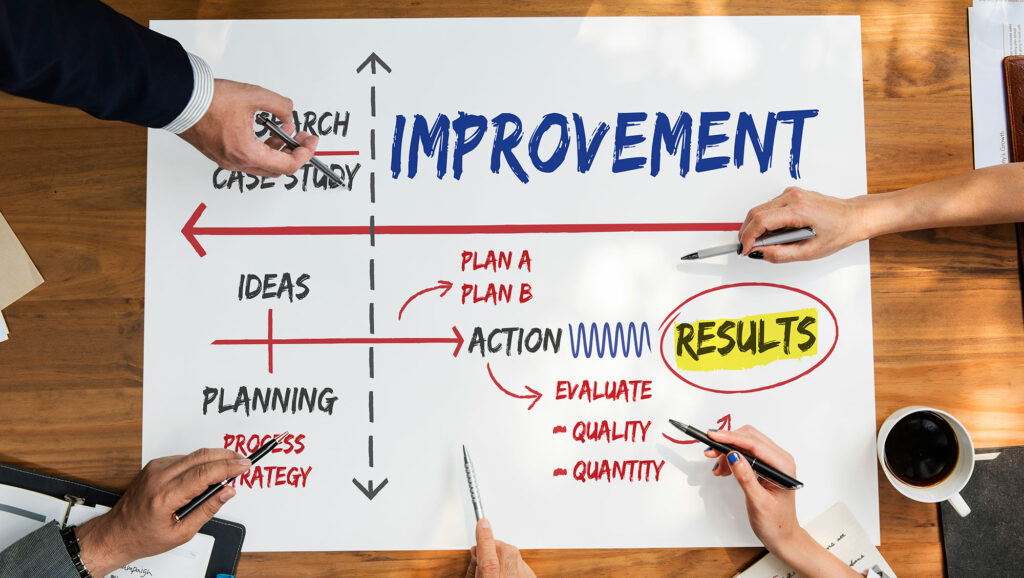Effective training programs are crucial for organizations looking to develop and maintain a skilled workforce. However, it is difficult to determine whether training programs deliver the desired outcomes without measuring training effectiveness. Measuring training effectiveness allows organizations to assess the impact of their training programs and identify areas for improvement. By collecting data and analyzing results, organizations can improve the quality of their training programs, increase learner engagement, and optimize resources.

In this article, we will explore the importance of measuring training effectiveness, provide guidance on different evaluation methods, and discuss how to use the data collected to improve future training programs. We will also share examples of successful evaluation methods and how they have led to improved training outcomes.
Importance of Measuring Training Effectiveness

Measuring training effectiveness is crucial for organizations that invest in employee development. It allows them to assess the impact of their training programs and identify areas for improvement. The benefits of measuring training effectiveness are many, and we will discuss some of the most important ones below.
Improved Training Quality
By measuring training effectiveness, organizations can evaluate the quality of their training programs. They can determine whether the training is meeting its objectives and whether participants are learning the necessary skills and knowledge. This information can be used to improve the quality of future training programs.
Increased Learner Engagement
When learners are engaged in the training process, they are more likely to retain the information presented to them. Measuring training effectiveness can help organizations determine whether participants are engaged in the training program. This information can be used to modify training programs and increase participant engagement.
Optimized Resources
Measuring training effectiveness can help organizations optimize resources. By determining which training programs are most effective, organizations can allocate their resources more efficiently. This can help reduce training costs and increase the return on investment in employee development.
Identifying Areas for Improvement
Measuring training effectiveness can help organizations identify areas for improvement in their training programs. For example, if participants consistently rate a particular training module poorly, the organization can modify or remove the module to improve the program’s overall effectiveness.
Achieving Organizational Goals
Ultimately, measuring training effectiveness can help organizations achieve their goals. Whether the goal is to increase employee retention, improve customer satisfaction, or increase productivity, effective training programs are an important tool for achieving these objectives.
Measuring training effectiveness is essential for organizations that want to develop and maintain a skilled workforce. It helps improve training quality, increase learner engagement, optimize resources, identify areas for improvement, and achieve organizational goals. The following sections will discuss different evaluation methods and how to use the data collected to improve future training programs.
Evaluation Methods
There are several evaluation methods available to measure the effectiveness of training programs. Each method has its strengths and weaknesses and is appropriate for different situations.

In this section, we will discuss some of the most commonly used evaluation methods, their strengths and weaknesses, and how to use the data collected to improve future training programs.
1. Kirkpatrick’s Four-Level Model
Kirkpatrick’s four-level model is a widely used evaluation method that assesses the effectiveness of training programs at four levels: reaction, learning, behavior, and results. This method is valuable because it provides a comprehensive evaluation of the training program. However, it can be time-consuming and may require significant resources to implement.
To use Kirkpatrick’s model, organizations should gather feedback from participants regarding their reaction to the training program. They should also assess whether participants have learned the necessary skills and knowledge. Then, they should evaluate whether participants have changed their behavior as a result of the training and whether this behavior change has resulted in positive results for the organization.
2. Phillips’ ROI Model
Phillips’ ROI model assesses the effectiveness of training programs by measuring the return on investment (ROI) for the organization. This method is valuable because it allows organizations to determine the financial impact of their training programs. However, it can be challenging to implement because it requires significant resources and data to calculate ROI accurately.
To use Phillips’ ROI model, organizations should assess the costs of the training program and compare them to the financial benefits realized by the organization. This can include increases in revenue, reductions in costs, or improvements in productivity.
3. Brinkerhoff’s Success Case Method
Brinkerhoff’s Success Case Method assesses the effectiveness of training programs by identifying and analyzing the most successful cases. This method is valuable because it allows organizations to identify what works well in their training programs and replicate these successes. However, it can be challenging to generalize the results to the overall training program.
To use Brinkerhoff’s Success Case Method, organizations should identify the most successful cases and analyze what contributed to their success. They should then use this information to make improvements to the overall training program.
Different evaluation methods are appropriate for different situations. Organizations should consider their goals and resources when selecting an evaluation method. Regardless of the method chosen, the data collected should be used to improve future training programs. In the next section, we will discuss how to use evaluation data to improve training programs.
Using Data to Improve Training Programs
Collecting evaluation data is only the first step in improving training programs. The data must be analyzed and interpreted to make meaningful improvements.

In this section, we will discuss how to use the data collected from evaluation methods to improve training programs.
1. Analyzing and Interpreting Data
Organizations should analyze and interpret the data collected from evaluation methods to identify areas for improvement. This can involve looking for trends and patterns in the data, identifying areas where participants struggled or excelled, and comparing the data to previous training programs.
2. Using Data to Make Improvements
Once the data has been analyzed and interpreted, organizations should use it to make improvements to future training programs. This can involve making changes to the training content, format, or delivery method. For example, if the data shows that participants struggled with a particular topic, organizations may need to provide additional resources or modify the training to make it more engaging and effective.
3. Importance of Continuous Improvement

Continuous improvement is essential to ensure that training programs remain effective and relevant. Evaluation data can be used to inform ongoing training development by identifying areas for improvement and monitoring the effectiveness of changes made to the training program.
Collecting evaluation data is just the first step in improving training programs. Organizations must analyze and interpret the data to identify areas for improvement and use the data to make meaningful changes to future training programs. Continuous improvement is essential to ensure that training programs remain effective and relevant. Evaluation data can be used to inform ongoing training development and ensure that training programs meet the needs of participants and organizations.
Examples of Successful Evaluation Methods
To illustrate the benefits of using evaluation methods, we will discuss some case studies of organizations that have successfully used evaluation methods to improve their training programs.
1. Kirkpatrick’s Four-Level Model
One organization used Kirkpatrick’s four-level model to evaluate its sales training program. The organization collected data at each level of the model to assess the training program’s effectiveness

. The data showed that the program was most effective at Level 1 (reaction) and Level 2 (learning), but less effective at Level 3 (behavior) and Level 4 (results). As a result, the organization made changes to the training program to improve its effectiveness at Level 3 and Level 4. These changes included providing more on-the-job training and coaching to reinforce learning and incorporating sales metrics into the training program to measure results. The organization saw an improvement in sales performance as a result of these changes.
2. Brinkerhoff’s Success Case Method
Another organization used Brinkerhoff’s Success Case Method to evaluate its leadership training program. The organization identified a group of successful leaders who had completed the training program and collected data on their performance before and after the training. The data showed that the training program had a positive impact on the performance of these leaders. The organization used this data to identify the specific components of the training program that were most effective and made changes to the program to ensure that all participants received this training. The organization saw an improvement in leadership performance across the organization as a result of these changes.
3. Phillips’ ROI Model
A third organization used Phillips’ ROI Model to evaluate its diversity and inclusion training program. The organization collected data on the costs of the training program, the participants’ reactions to the training, the learning outcomes, and the impact of the training on business results. The data showed that the training program had a positive impact on business results and that the benefits of the program outweighed the costs. The organization used this data to justify the investment in the training program and to make improvements to the program to ensure its continued effectiveness.
These case studies demonstrate the benefits of using evaluation methods to improve training programs. The data collected through evaluation methods can help organizations identify areas for improvement, make changes to training programs, and achieve their training goals. By using evaluation methods, organizations can ensure that their training programs are effective, efficient, and relevant to the needs of participants and the organization.
Conclusion
In summary, measuring training effectiveness is crucial for organizations that want to ensure their training programs are effective and relevant. By using evaluation methods, organizations can collect data on the effectiveness of their training programs and use that data to make improvements that will enhance learning outcomes and business results.

Evaluation methods, such as Kirkpatrick’s four-level model, Phillips’ ROI model, and Brinkerhoff’s Success Case Method, provide organizations with a framework to evaluate their training programs and identify areas for improvement. Each method has its strengths and weaknesses, and organizations should choose the method that best fits their training objectives and goals.
To make the most of evaluation data, organizations need to analyze and interpret the data collected and use it to make informed decisions about training program improvements. Continuous improvement is essential, and organizations should use evaluation data to inform ongoing training development and improvement.


